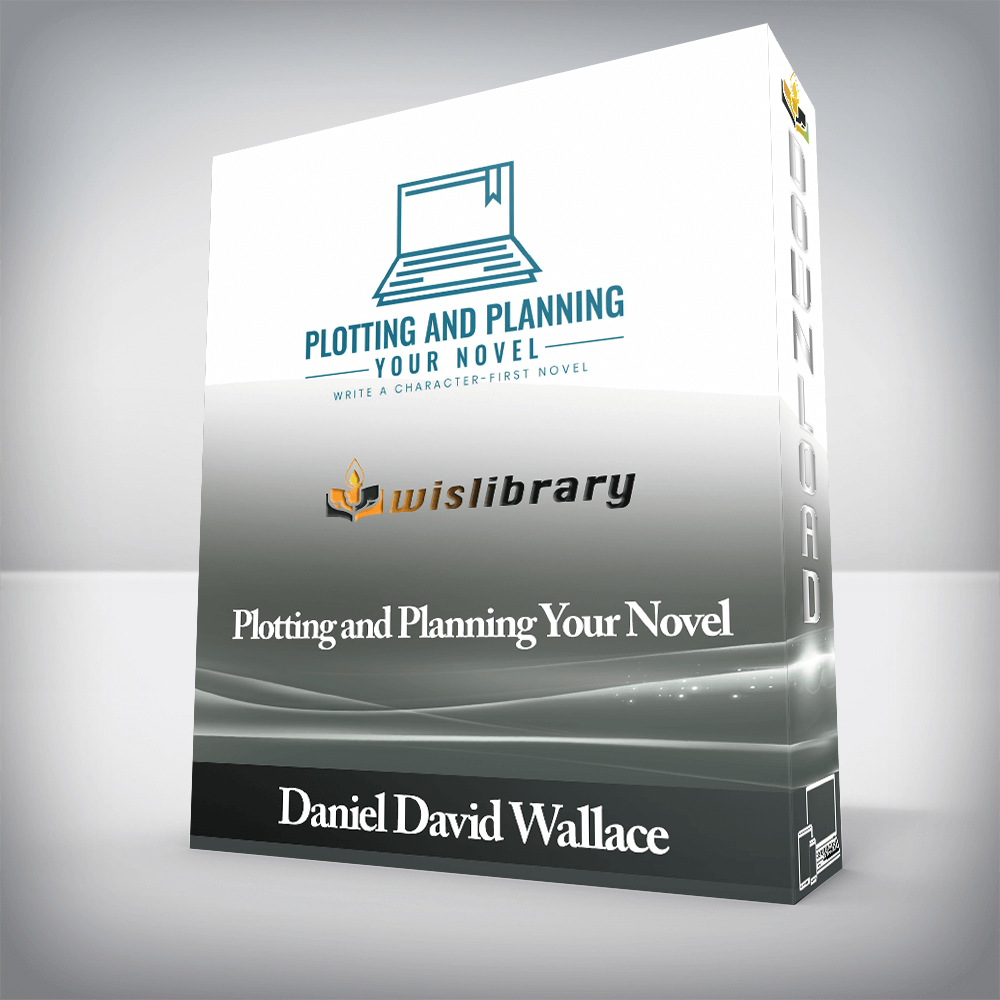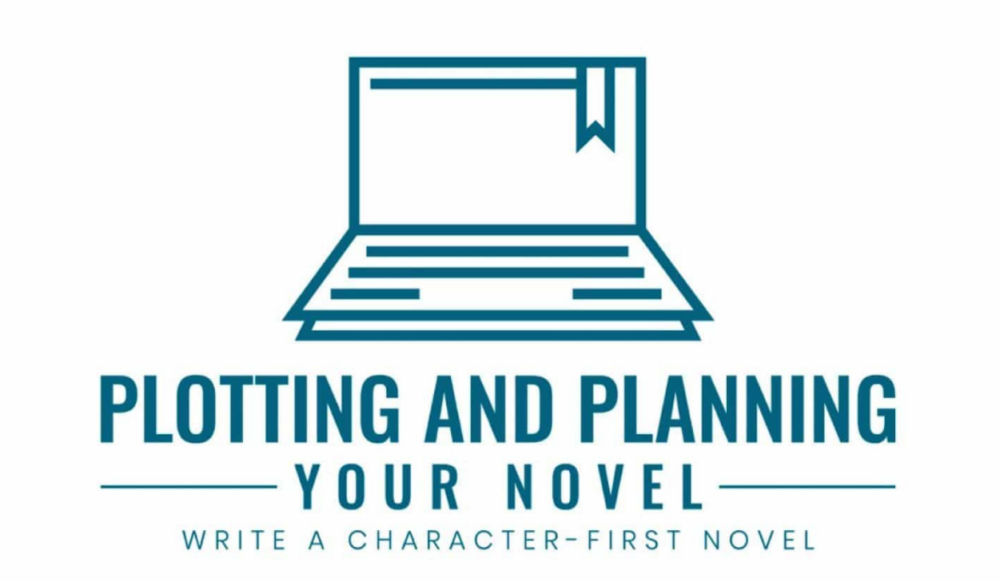

What if you could write your book steadily and smoothly, without always wondering whether it was good or not?
Do you want to write a great novel that engages and intrigues your readers?
A novel that feels like the kind of story you love to read?
If so, this course is for you.

I’m an award-winning writer and teacher. I’ve read my work to crowds of hundreds of people, holding their attention, keeping them hooked. I’ve heard them laugh at the jokes in the dialogue, and watched their mouths go “ahhhh” at the plot twists.
But it wasn’t easy to get there.
In this course, I’m going to guide you through what I believe is the best way to plot, plan, and write a novel. Because plot is hard.
Plotting and Planning Your Novel is a complete education in writing a novel, with lessons on narration, scene design, and so much more. However, you’ll learn the central framework of the course quickly and easily: this is the “ABC plot.”
For new writers, the ABC plot offers a streamlined way to get a story down on the page; for published writers, it illuminates a path for continual skill development and improvement.
In the ABC plot, we don’t talk about the character having “goals” or “needs”: rather, we construct three different threads that are pulling on them, and which continues to pull on them as the story develops. This makes your protagonist feel “alive” to your reader and it adds to the reader’s tension in every chapter.
Some writing approaches suggest that you open a novel with a period of “everyday life,” forcing the reader to wait for the tale to truly begin. Others suggest you start with a bang, confronting the confused reader with a complex fight scene. Instead, the ABC plot shows you how to hook your reader’s attention on page one by connecting them to the main character on a deep level — and yet without confusing them or requiring they understand lots of back story.
Writers dread the “messy” middle, that long slog of trying to write those chapters where the story is supposed to get really exciting. The ABC plot shows you how to fill your middle chapters with conflict, revelation, and character change: we use your main character’s original desires and world-views to heighten the story in those crucial middle chapters.
In my experience, most writers are gifted at creating protagonists and settings. For most of us, when we imagine a new novel, that’s our the starting point: an imaginary person — in an interesting place.
For some writers, this part even comes “for free.” You just see a character somewhere, or you’re called to write about a place that haunts you.
And even if you’re not like this, and these two aspects of a novel don’t come for free (if it requires work to build up your historical setting, for instance) it’s still work that many authors seem to enjoy doing.
The problem is that plot isn’t like that. For most writers, it doesn’t come for free — not at all. Many of us, instead, begin with a slightly hazy picture of how the story will end, and an extremely hazy picture of the story’s middle. Trying to turn that into a detailed plot is stressful and unsatisfying.
We all have the nervous intuition that, as the story progresses, things will need to get more intense, more dramatic, more challenging, but it’s not at all clear how to do that.
Additionally, once we start writing, there is the constant worry: is this any good or not? Often, we can sense that something isn’t coming together quite right, and so we go back and revise the beginning, or spend days editing our previous paragraph.
This is not a good situation to be in!
Here’s why this plotting framework offers you a much better way: it plays to your strengths.
You’re already good at imagining a fictional situation: the course shows you how to turn that situation into an engaging, twisty, intriguing plot. It doesn’t ask you to construct spreadsheets or inspect your dreams for clues (although you definitely can do so if you wish): instead, you will construct the plot from the things you already love about your story.

Even when I’ve work with a writer who is really despairing about their novel, who is convinced the whole project should be locked in a steel box and hurled into the sea, once we get talking, we usually find that they already have the building blocks of a great plot.
It’s rare that we have to add that much more to their concept than a few secondary characters.
And it’s never the case that I ask them to write a different type of novel to the one they were picturing. This is a wonderful, euphoric moment for a writer: to see, finally, their mental picture of their novel turn into a step-by-step, chapter-by-chapter plot.
The second reason why you should write your novel “character-first” is that it suits how your readers actually read.
What your readers want is to meet a person, and to see that person struggling and yearning, and to get wrapped up in that protagonist’s hopes and challenges. They want startling plot twists and shifts in focus. And they LOVE mysteries: they love to gradually uncover the truth as the tale builds to its conclusion.
They want to care about the main character, and they want to be able to understand what is happening, scene by scene, and they want to see the story deliver on its promises. They want the ending, above all, to feel meaningful.
That’s the kind of story we’re going to write in this course.

The character-first approach has helped so many writers because it gives your plot an engine, a straightforward principle for guiding the story forward.
We start the story with a protagonist who has certain longings, regrets, and ambitions. As the reader starts following this character on her journey, the reader begins to bond with the protagonist. The reader starts to care. At the same time, we gradually introduce the secrets of the world around our protagonist: its magic, its hidden histories, its politics and customs.

When the story begins, the protagonist assumes that her longings, regrets, and ambitions are compatible with each other: the plot starts to quicken and build as she discovers this may not be the case.
In fact, the major components of the plot are tied, in a deep and significant way, to the building blocks of this protagonist’s character, and the more she tries to make progress, the more these building blocks conflict with each other.
(In the course, I will break down, scene by scene, how this plotting process works in a crime thriller, Lee Child’s Killing Floor, and in Edith Wharton’s literary love story, The Age of Innocence. And I’ll give copious examples from Brandon Sanderson, Haruki Murakami, Virginia Woolf, Charles Dickens, and others.)
This process ensures that we can tell a story that is forward-moving (we don’t need to throw in fake-plot stuff to make it seem like things are developing) and meaningful (when big shifts and twists happen, they actually mean something, both to the reader and the protagonist).

This course is designed to help you build a great plot for your novel. You’ll be guided step by step.
It’s designed for busy people. If you want, you can binge all the training videos in one long night, but if you don’t have that sort of time, I will coach you through the course in a sequence of bite-sized lessons.

You won’t need a much time each day: during the course, I’ll be in touch with regular emails teaching the day’s technique or concept. I’ll tell you when it’s time to watch each video in the course.
And we’re going to learn some fantastic writing skills.
Build a plot out of your character’s rawest emotions, deepest fears, and their most conflicted desires. This plotting sequence takes your protagonist on an emotional journey of increasing tension and significance. They begin by feeling distant and disinterested, yet by the end they are willing to sacrifice everything to complete their quest.
Few books or classes teach this, but writing a novel is inherently different to writing a screenplay or a myth. For novel-writers, “care” is a crucial concept: this lesson will teach you how to guide your reader’s attention through each twist and revelation.
In order to write a good “character-first” novel, we need at least one worthy and substantial protagonist. But what makes a character an effective protagonist for your novel? This unit will walk you through the process of inventing, or raising to the surface, the three key qualities your protagonist will need.
Many writers feel unsure how to present exposition, backstory, character histories, or complex world-building. As a result, they tend to drop too much, too soon, leading to the dreaded “info-dump,” a big chunk of exposition that stops the reader cold. But it doesn’t have to be like this. The “big toe” method shows you how to turn your exposition into engaging and exciting mysteries, so that your reader will be eager to read more about it.
How is it that famous novels contain amazing plot twists that always seem to land right? While the rest of us try to include twists, but they either really confuse our readers or aren’t that surprising? The secret is repetition: repetition and attention. You’ll harness the power of your reader’s attention to prepare them, subconsciously, for the next big surprise.
Learn to streamline and focus your story. Spot the parts of your current vision for your novel will trip you up and cause you grief, and get them back under control.

Creator of Plotting and Planning Your Novel
Hi, I’m Daniel. I’m a writer, teacher, PhD researcher, and book editor. I create easy-to-implement techniques that help you master the craft of fiction.
I’ve given lectures on plot at the AWP conference and other writing festivals around the US, and my work has been read at the Iowa Writers Workshop. My fiction has won the Hodges prize, the Toni Brown scholarship, and I’ve published short stories and essays in many journals. In my regular life, I teach advanced writing skills at a great university.
Since I started teaching online, I’ve worked with hundreds of writers as a coach and teacher. Over six-thousand writers subscriber to my newsletter, “Writing Related.”
There are no reviews yet.
You must be <a href="https://wislibrary.net/my-account/">logged in</a> to post a review.